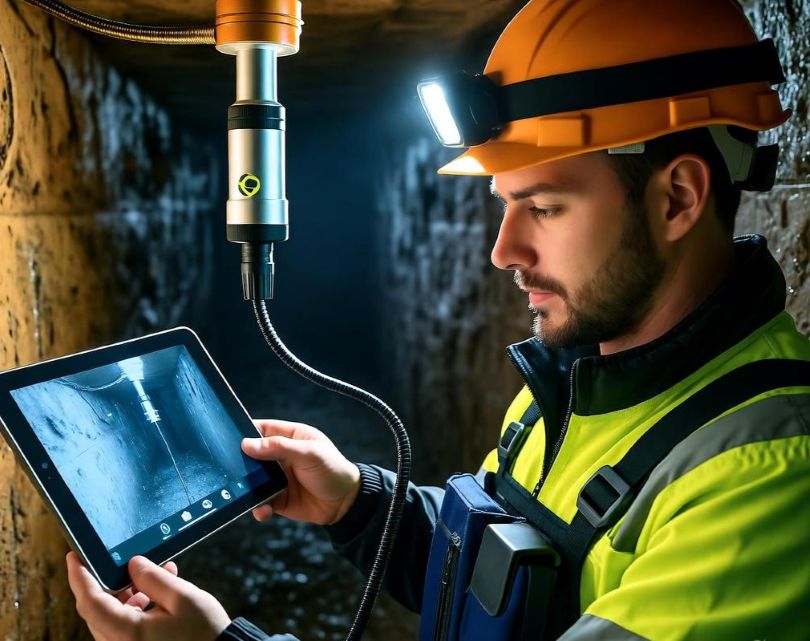
Every year, cities lose millions due to undetected leaks, pipe corrosion, and inefficient sewer maintenance. What used to require digging up roads and guesswork now relies on smart technology. The integration of Internet of Things (IoT) devices, advanced cameras, and data analytics is revolutionizing how plumbing companies detect and repair underground issues. Sewer systems that once operated in silence are now speaking volumes through real-time data.
Companies like Riool Herstel are leading this transformation with technologies that simplify complex repair work. Using methods such as sewer relining (relinen riool), they can fix underground pipes without excavation. This technique, paired with IoT sensors and camera inspections, allows teams to identify the source of a blockage or crack instantly. What once took days of manual inspection now happens in a matter of hours, saving both time and cost for homeowners and municipalities.
The Rise of Smart Sewer Diagnostics
Traditional sewer maintenance used to depend on physical inspections and guesswork. Technicians had to rely on limited clues such as foul odors or slow drainage to locate a problem. Now, high-resolution cameras and robotic crawlers are changing that. They travel deep into sewer lines, transmitting live footage to surface-level operators. This technology gives companies precise visuals of cracks, leaks, or root intrusions before any repair begins.
The next evolution is data analytics. Once images and readings are captured, software tools analyze them for patterns. Algorithms can predict where future damage might occur, helping maintenance teams plan proactive interventions. By combining these insights with digital records, companies are creating smarter, more reliable sewer systems that practically maintain themselves.
How IoT Connects the Underground Network
The Internet of Things has expanded far beyond smart homes and wearable devices. It now connects infrastructure at the city level, including water and sewer networks. IoT sensors can monitor flow rates, pressure changes, and temperature fluctuations in real-time. When an anomaly occurs, the system sends alerts to technicians instantly. This ensures rapid response and prevents small issues from turning into expensive repairs.
For companies using sewer relining techniques, IoT integration enhances precision and safety. Technicians can monitor cured-in-place lining temperatures, resin curing progress, and material stress levels during the repair process. Each sensor reading becomes part of a digital maintenance record that tracks pipe health over time. This data-driven approach allows for continuous improvement in both service quality and environmental sustainability.
From Manual Labor to Digital Precision
Smart diagnostics have reduced human error and increased efficiency. Remote-controlled tools equipped with sensors and cameras mean fewer workers need to enter hazardous environments. Instead of relying on intuition, decisions are made based on data. The result is faster repairs and safer working conditions for maintenance crews.
One technician from Riool Herstel described the process as “giving pipes a voice.” Each pipe section communicates through data, revealing its health status and potential weaknesses. This transparency improves coordination between departments and helps cities build predictive maintenance schedules. It is a shift from reactive problem-solving to preventive planning.
Environmental and Economic Benefits
Technology-driven sewer maintenance also contributes to sustainability goals. By identifying leaks early, water waste is reduced. The relining method prevents the need for full pipe replacement, minimizing the carbon footprint of construction and disposal. Municipalities save on infrastructure costs while extending the life of existing systems.
Digital monitoring also supports compliance with environmental regulations. Continuous data logging ensures that wastewater treatment systems remain within legal parameters. This creates a cleaner, safer ecosystem for both communities and natural waterways.
The Future of Sewer Maintenance
As cities expand, the demand for efficient underground infrastructure grows. IoT and smart diagnostics will continue to evolve, incorporating artificial intelligence to predict failures before they happen. Augmented reality tools could soon assist technicians by overlaying digital schematics onto real-time visuals of the sewer network. The future of sewer management is no longer about digging but about data.
The evolution from manual work to digital insight shows how innovation can thrive even beneath our feet. With methods like sewer relining leading the way, companies such as Riool Herstel demonstrate how IoT and smart diagnostics can turn a hidden infrastructure into an intelligent, self-monitoring system. This fusion of technology and craftsmanship is redefining how cities stay clean, connected, and prepared for the future.
